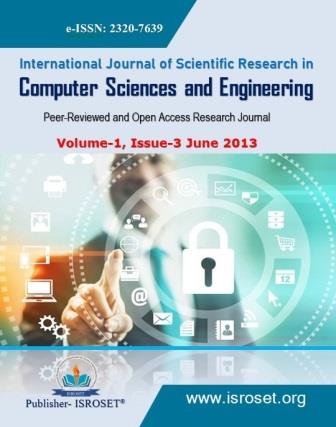Metastability Analysis of Synchronizer
Keywords:
Data Synchronization, Data Loss, Data Loss Metastability, SynchronizerAbstract
The multiple clock domain systems communicate with each other causes data loss. This data loss is due to mismatch in frequencies. For proper communication the frequencies must be synchronized. Hence synchronizer is used for data synchronization process with non-zero probability of failure. The synchronizer is also having its parameters. It suffers from metastability as data changes in between timing window due to which synchronizer failure occurs. As the metastability occurs we cannot predict the correct level at output. The proposed architecture is modeled with verilog and simulated with Xilinx ISE design suit 13.1and its parameter are verified with Quartus II 10.1. Analog behavior is studied by using Tanner. The probability of occurrence of metastability reduces with timing window width.
References
“Keeping Metastability from Killing Your Design,” Grosse, Debora. Unisys Report. June 23, 1994. Available[online]hppt://archives.einsite.net/archives/ednmag/reg/1994/062394/13df2.htm
Metastable Response in 5-V Logic Circuits,” Haseloff, Eilhard. Texas Instruments Report.Feb1997available[online] http://www.ti.com/sc/docs/psheets/abstract/apps/sdya006.htm.
“Metastability in Altera Devices,” version 4. Altera Application Note 42. May 1999 available[online] http://www.altera.com/literature/an/an042.pdf.
T. H.-Y. Meng, Synchronization Design for Digital Systems, Kluwer Academic Publishers, 1991.
D. J. Kinniment, Synchronization and Arbitration in Digital Systems, Wiley, 2008.
W. J. Dally and J. W. Poulton, Digital System Engineering, Cambridge University Press, 1998.
C. Dike and E. Burton, ―Miller and noise effects in a synchronizing flip-flop,‖ IEEE Journal of Solid.
S. Yang, M. Greenstreet, ―Computing synchronizer failure probabilities,‖ Proc. Design Automation and Test in Europe (DATE), pp. 1 – 6, 2007.
R. Ginosar, ‘‘Fourteen Ways to Fool Your Synchronizer,’’ Proc. IEEE Int’l Symp. Asynchronous Circuits and Systems (ASYNC 03), IEEE CS Press, 2003, pp. 89-96.
S. Beer, R. Dobkin and R. Ginosar, "Metastability measurements of several ASIC and FPGA synchronizers," Technical Report, EE Dept, Technion, Oct. 2009.
Digital design principles and practices by John F. Wakerly.
Timing Measurement by Semiat Ginosar .
C. Dike and E. Burton, "Miller and Noise Effects in a Synchronizing Flip-Flop," IEEE Journal of Solid-State Circuits.
J. Jex and C. Dike, “A fast resolving BiNMOS synchronizer for parallel processor interconnect,”-. IEEE Journal of Solid-State circuits.
R. Ginosar and R. Kol, “Adaptive Synchronization”.
D.G. Messerschmitt, Synchronization, in T.H. Meng, Synchronization Design for Digital Systems, Kluwer Academic Publishers.
D.J. Kinniment, A. Bystrov, and A.V. Yakovlev, “Synchronization Circuit Performance,” IEEE.
Downloads
Published
How to Cite
Issue
Section
License

This work is licensed under a Creative Commons Attribution 4.0 International License.
Authors contributing to this journal agree to publish their articles under the Creative Commons Attribution 4.0 International License, allowing third parties to share their work (copy, distribute, transmit) and to adapt it, under the condition that the authors are given credit and that in the event of reuse or distribution, the terms of this license are made clear.







